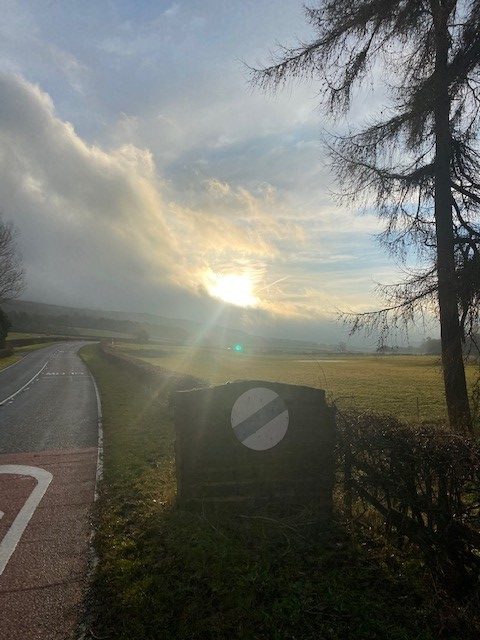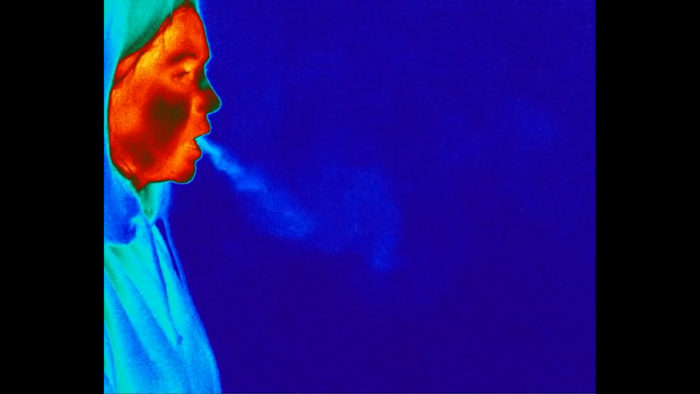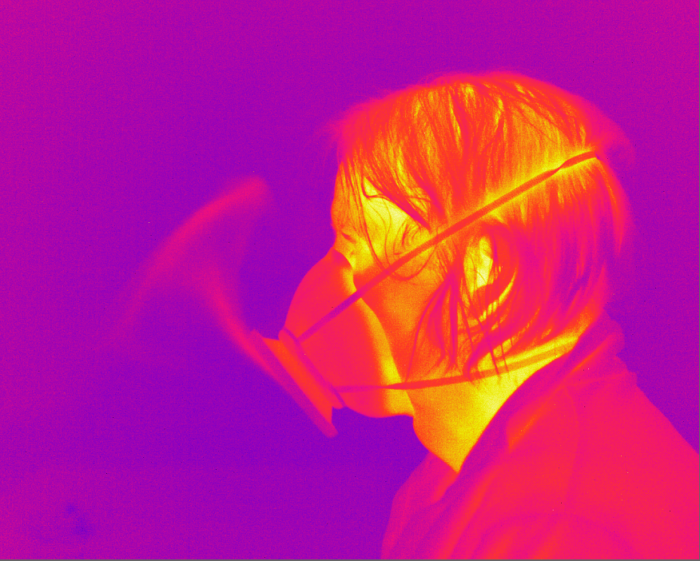News
Monthly News Updates from the Sorby Labs Suite
January 2022
In 2022 we welcome a new researcher into the Density Current Lab who will be using the Buckee Flume.
Ayse Yuksel Ozan will be joining us to investigate the dependency of Froude number on the velocity of density currents. Ayse will be quantifying these flows using UVP for velocity and siphoning for concentration of saline and particulate density currents.
The SSPAL Lab has a new project with Janet Richardson to investigate and trial mitigation and intervention options relevant to sediment inputs and the role of Invasive Non-Native Species (INNS) in the River Derwent.

This project is funded by Yorkshire Water and will start with a phase of baselining sediment erosion, transport, and deposition which is critical to inform understanding of how the catchment will respond to future interventions and mitigations.
December 2021
Sorby Labs Suite has been awarded Policy Support funding for ‘Communicating virus transmission risks to UK Government and performance organisations’. The project will be undertaken in collaboration with colleagues from Schools of Civil Engineering, Music and Design.

Our PGR Ed Keavney has move onto the second phase of his experimental work. He’s built a prototype channel with dye injection on the bend apices in order to visualize the overspill of the density current and the generation of the stable flow structures. He will also quantify the flow dynamics using UVP and ADV.
October 2021
Caroline Marshall’s Open Access Paper on “The effect of Schmidt number on gravity current flows: The formation of large-scale three-dimensional structures” is Editor’s pick this month.
Caroline’s experimental data was gathered using volumetric particle image velocimetry in the Fluid Dynamics Laboratory. In her paper, three-dimensional direct numerical simulations of constant-influx solute-based gravity currents with Reynolds numbers 100≤𝑅𝑒≤3000 and Schmidt number 1 are presented, with the effect of Schmidt number considered in cases with (𝑅𝑒,𝑆𝑐)=(100,10), (100,100), and (500, 10). These data are used to establish the effect of Schmidt number on different properties of gravity currents, such as density distribution and interface stability. It is shown that increasing Schmidt number from 1 leads to substantial structural changes not seen with increased Reynolds number in the range considered here. Recommendations are made regarding lower Schmidt number assumptions, usually made to reduce computational cost.
We welcome two new PGRs this month, Dominykas Buta and Abhimanyu Gaur. Dominykas will be researching slot convention in a joint UKAEA project and Abhimanyu will be studying the hydrodynamics of plastics once he has completed the Masters year of the Fluid Dynamics CDT. Both projects will be undertaken in the Fluid Dynamics Laboratory.
Ed Keavney has passed his Year 1 transfer and will continue his lab work investigating experimental sediment gravity flows in submarine channel systems, and the processes on internal levees and terrace surfaces in the newly renovated Spider Flume, part of the Density Currents Lab.
Here is a video from some of his preliminary experiments, which look at how saline density currents interact with slopes. In the video, note the changes in coloured dyes as the saline flows moves from right to left.
Helena Brown took part in the water@leeds Water Woman Inspirational Career Panel to discuss career progression after winning the 2021 Water Woman Award for Research Support.
June 2021
Caroline Marshall joins the lab as a post doc, investigating aerosol flow fields inside face masks for Phase 2 of the National COVID Study project, funded by the Health & Safety Executive. The project, led by Prof Cath Noakes, combines expertise from the Schools of Earth and Environment, Mechanical Engineering, Civil Engineering and Maths at the University of Leeds.
Caitlin Chalk’s Open Access Paper on “Spatial and temporal evolution of an experimental debris flow, exhibiting coupled fluid and particulate phases” is out now in Acta Geotechnica.
Caitlin’s experimental data was gathered using particle image velocimetry to quantify the internal behaviour of debris flows to provide a fundamental insight into the mechanics responsible for their motion. This is the first time that the internal dynamics have been documented within the full architecture of a developing experimental debris flow, from the head to the tail.
May 2021
Caroline Marshall‘s Open Access Paper on "Observations of large-scale coherent structures in gravity currents: implications for flow dynamics" is out in Experiments in Fluids.
Caroline’s experimental data was gathered using volumetric particle image velocimetry. This method enables the instantaneous, whole-field dynamics of constant influx solute-based gravity currents to be resolved. While averaged turbulent kinetic energy profiles are comparable to previous work, the instantaneous data reveal significant temporal variation, with velocity measurements indicating large-scale wave-like motions within the body. Spectral analysis and dynamic mode decomposition, of streamwise and vertical velocity, are used to identify the frequencies and structures of the dominant motions within the flow.
Sorby Labs Suite has been confirmed as the experimental facility for Phase 2 of the National COVID Study project, funded by the Health & Safety Executive. The project, led by Prof Cath Noakes, combines expertise from the Schools of Earth and Environment, Mechanical Engineering, Civil Engineering and Maths at the University of Leeds.
Findings from these experiments on aerosol flow fields inside face masks will be reported to SAGE.

April 2021
Caroline Marshall PhD viva success ‘Turbulence in Gravity Currents’.
Caroline used a custom rig alongside 100Hz PIV and Volumetric PIV to quantify the turbulence structure of constant influx gravity currents and looking for large scale coherent structures.
Our new PGR Ed Keavney was on Channel 5 news explaining the findings of his Masters project ‘Microplastic contamination in the Liverpool Bay and Mersey Estuary: sedimentological constraints on distribution and concentration’. Ed also won the 2020 BSRG MSc prize for his talk covering this research.
To continue research into this important topic, the Fluid Dynamics Laboratory in Sorby Labs Suite is recruiting a PGR in collaboration with the EPSRC Centre for Doctoral Training in Fluid Dynamics and Equinor. The PGR will join Leeds in 2021 and their PhD project will investigate the hydrodynamics of pollutant and organic carbon settling: implications for dispersal and concentration in oceans.
March 2021
Isabel de Cala PhD viva success ‘An experimental and field-based investigation into decimetre-scale bedforms formed by turbidity currents’.
Issy used the slurry flume in Density Current Laboratory to perform long-duration (48 hours) experiments designed to investigate how beds of non-uniform and bimodally distributed sediment mixtures influence the development and dynamics of bedforms. A key outcome was that widely used bedform phase diagrams are poor predictors of the bedform stability fields above beds with wide grain-size distributions due to bed stabilisation. Furthermore, the formation of laterally extensive anastomosing networks of fine sediment laminations., and SSPAL grain sizing lab.
Georgina Williams PhD viva success ‘Segregation in High Concentration Particulate Flows’.
Georgie used a custom rig alongside a high-speed camera and PIV from the Fluid Dynamics Laboratory to examine the processes and products of fluidisation events through novel physical and numerical modelling of low, high and very high porosity systems. Georgina’s experimental results led to the development of models that account for the formation of void spaces during water-fluidised pipe formation, and demonstrates a dependency on bed porosity. Georgina’s work represents the first quantitative data illustrating void formation through a liquefied zone.
Charlie Lloyd’s Open Access paper on ‘Hydrodynamic efficiency in sharks: the combined role of riblets and denticles’ is out. Charlie used Laser Doppler Anemometry to investigate the influence of smooth and ribletted shark skin on a turbulent boundary layer flow. These were the first experiments to show the role of riblets in combination with the shark skin denticles. The results show that smooth denticles behave like a typical rough surface when exposed to an attached boundary layer. The combination of scales and riblets maintain flow attachment while also being hydrodynamically efficient in terms of skin-friction drag. Further advantages include anti-fouling, abrasion resistance, and defence against parasites.
The Sorby Labs Suite obtained a new FLIR Thermal Imaging Camera from Research England’s World Class Laboratories 2020/21 fund. The camera has a higher frame rate, is more sensitive and has a wider selection of lenses than the thermal camera SLS rented from FLIR for previous thermal camera work.

The FLIR thermal imaging camera has been used for Phase 1 of the National Covid Study, PI Prof Cath Noakes, which is funded by Health & Safety Executive. The camera was used immediately on delivery to investigate face mask fit and airflow inside/around a range of face mask types. The outcomes of this project were reported to the SAGE committee.
Our original videos have been used in articles published in El Pais and La Republica.
February 2021
Sorby Labs Suite was chosen as the experimental facility for the National COVID Study project, funded by the Health & Safety Executive. The project, led by Prof Cath Noakes, combines expertise from the Schools of Earth and Environment, Mechanical Engineering, Civil Engineering and Maths at the University of Leeds.
The Sorby Labs facing element in Phase 1 is visualising the flow field inside a mask using a polystyrene head (SAM, ‘the Sorby Airflow Mannequin’). We established a novel experimental methodology to capture mechanisms of flow within and outside face masks.
The outcomes will be reported to the SAGE committee.
SSPAL completed a project for the Environment Agency, which investigated the suspended and bedload sediment in Bishop’s Dike in North Yorkshire. Lab staff collected samples at points of interest along the catchment and used a range of analytical techniques to find the location of influxes of particulates. The results will provide a baseline from which to assess the impact of interventions in the future.
January 2021
We’re joined in the lab by our new PGR, Ed Keavney. He’ll be investigating experimental sediment gravity flows in submarine channel systems, and the processes on internal levees and terrace surfaces in the newly renovated Spider Flume, part of the Density Currents Lab.

Ed joined the Stratigraphy Research Group in October 2020 after graduating from the University of Manchester with an MEarthSci in Geology, and is part of the Slope5 JIP.
December 2020
In late 2020, the Sorby Labs Suite technician, Helena Brown, won a placement to be part of the Royal Institution Christmas Lecture Demo Team. The 2020 Lectures were called ‘Planet Earth: A Users Guide’ and discussed geology, oceans and the atmosphere.
Filming took place in late November and early December as Covid restrictions prevented live filming in front of an audience. The lectures were shown on BBC4 between Christmas and New Year as usual and can be found on the RI’s website. *link https://www.rigb.org/christmas-lectures/watch/2020/planet-earth-a-users-guide*
Helena can be briefly seen in the second lecture ‘Water World’, presented by Dr Helen Czerski, helping to run a density current depicting the Denmark Strait, the biggest underwater waterfall on Earth.
If you’d like to read more about her experiences you can find her report on the About Us page.
A new Sorby Labs Code of Conduct has been released, which all new lab users will need to read and follow. We welcome suggestions to improve this document.
